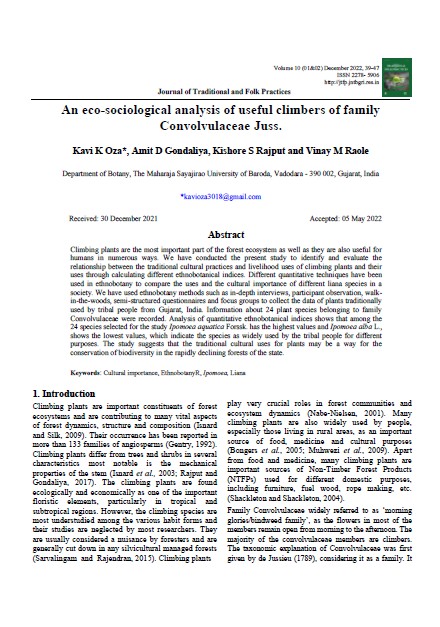An eco-sociological analysis of useful climbers of family Convolvulaceae Juss.
Keywords:
Cultural importance, EthnobotanyR, Ipomoea, LianaAbstract
Climbing plants are the most important part of the forest ecosystem as well as they are also useful for humans in numerous ways. We have conducted the present study to identify and evaluate the relationship between the traditional cultural practices and livelihood uses of climbing plants and their uses through calculating different ethnobotanical indices. Different quantitative techniques have been used in ethnobotany to compare the uses and the cultural importance of different liana species in a society. We have used ethnobotany methods such as in-depth interviews, participant observation, walkin-the-woods, semi-structured questionnaires and focus groups to collect the data of plants traditionally used by tribal people from Gujarat, India. Information about 24 plant species belonging to family Convolvulaceae were recorded. Analysis of quantitative ethnobotanical indices shows that among the 24 species selected for the study Ipomoea aquatica Forssk. has the highest values and Ipomoea alba L., shows the lowest values, which indicate the species as widely used by the tribal people for different purposes. The study suggests that the traditional cultural uses for plants may be a way for the conservation of biodiversity in the rapidly declining forests of the state.


